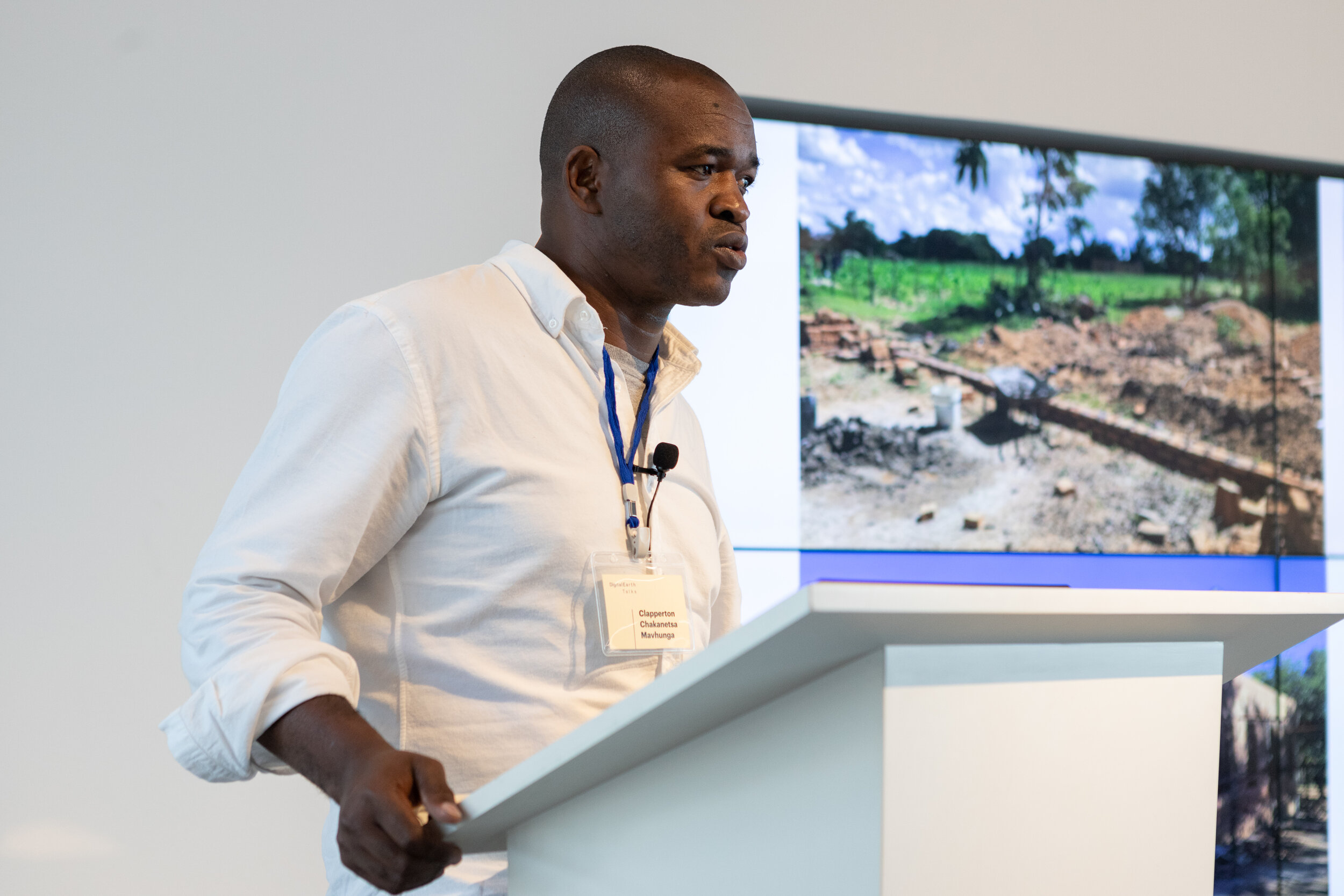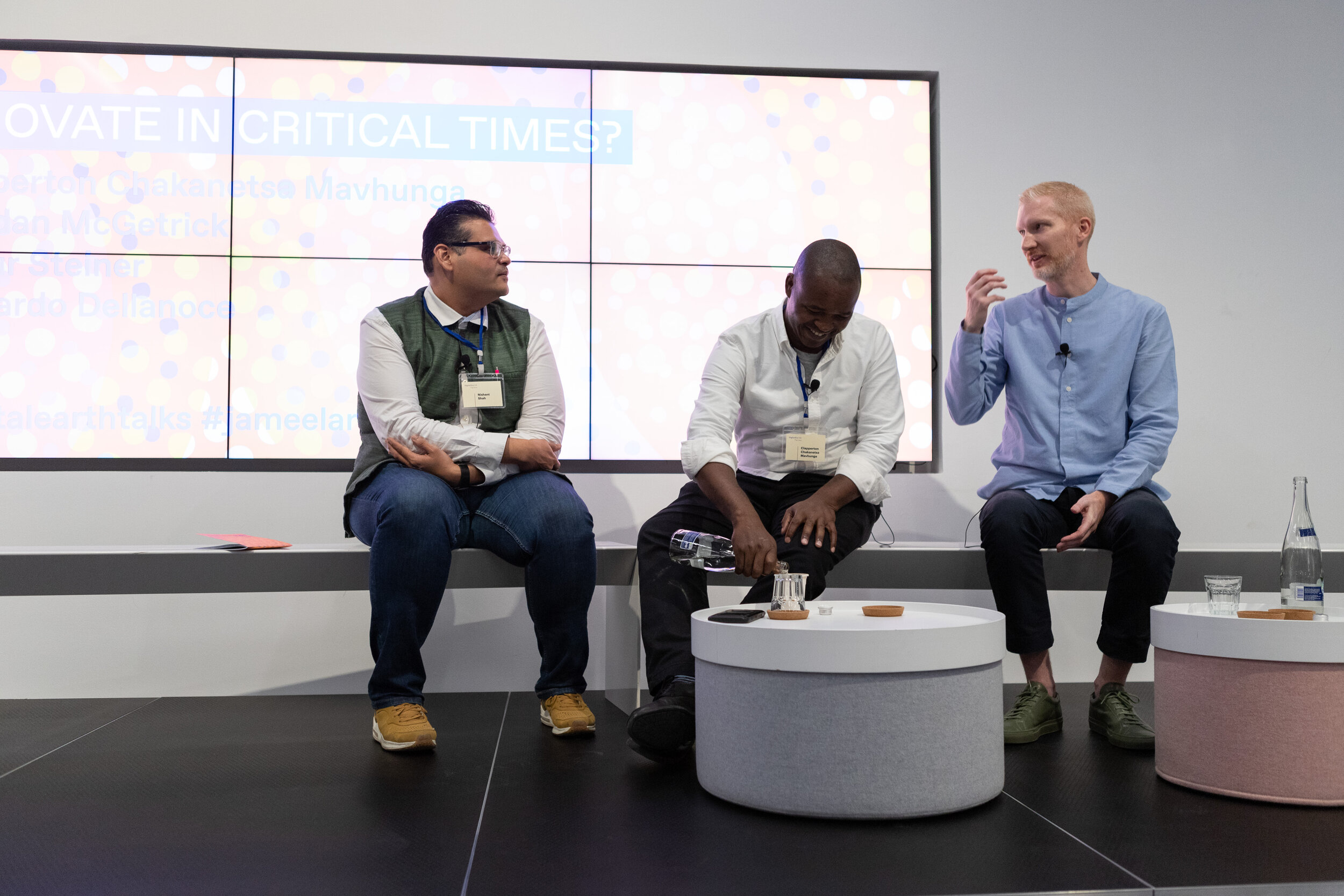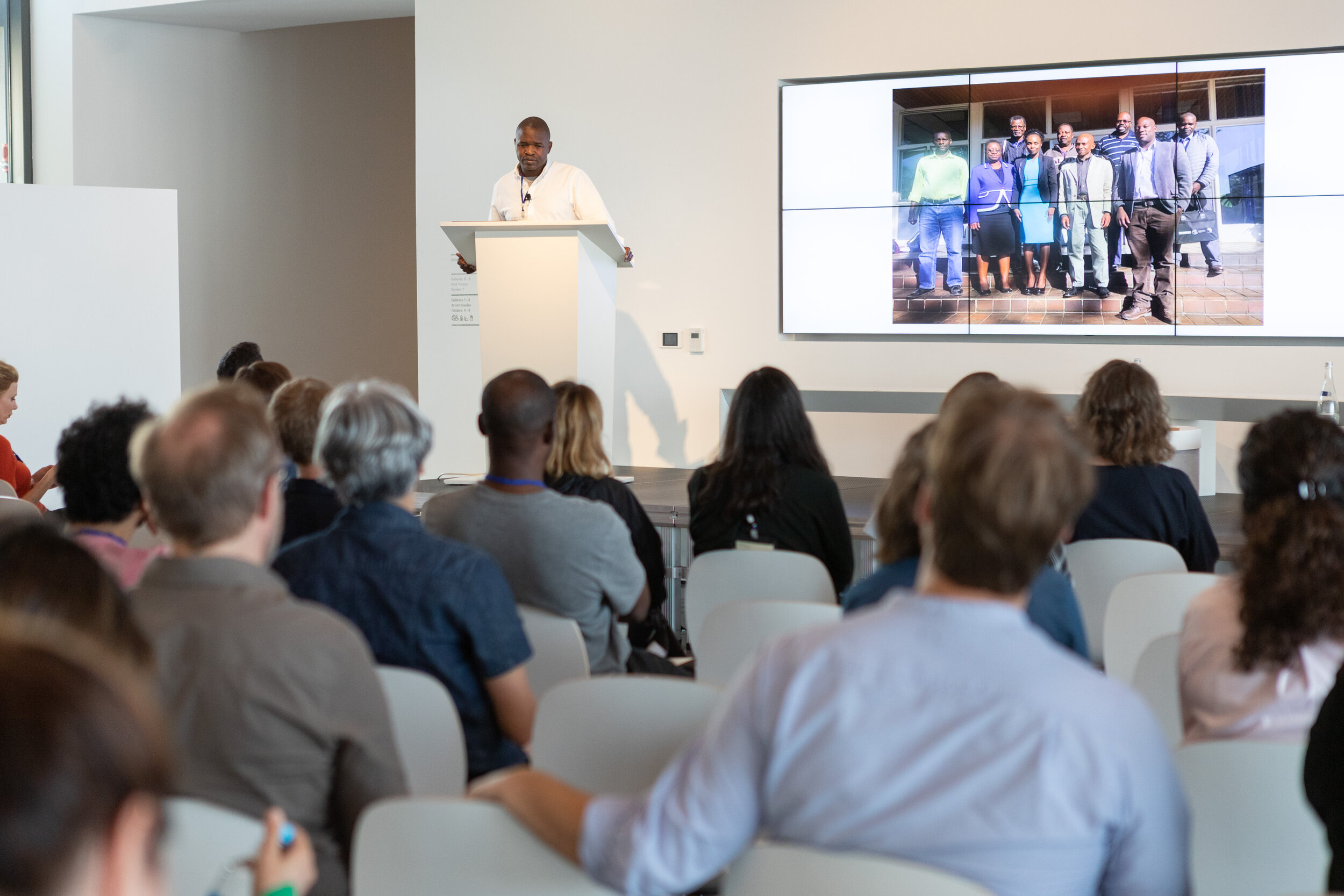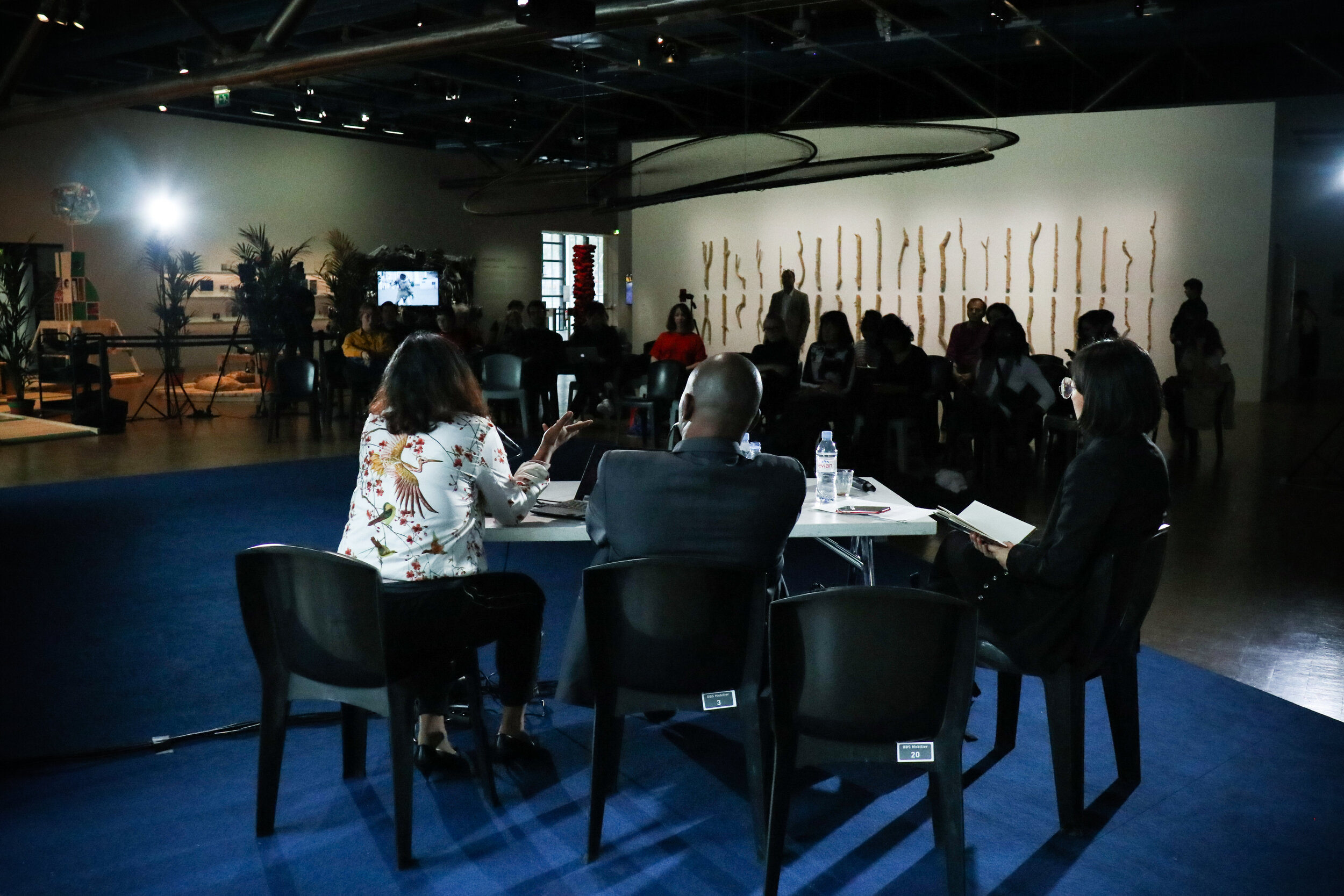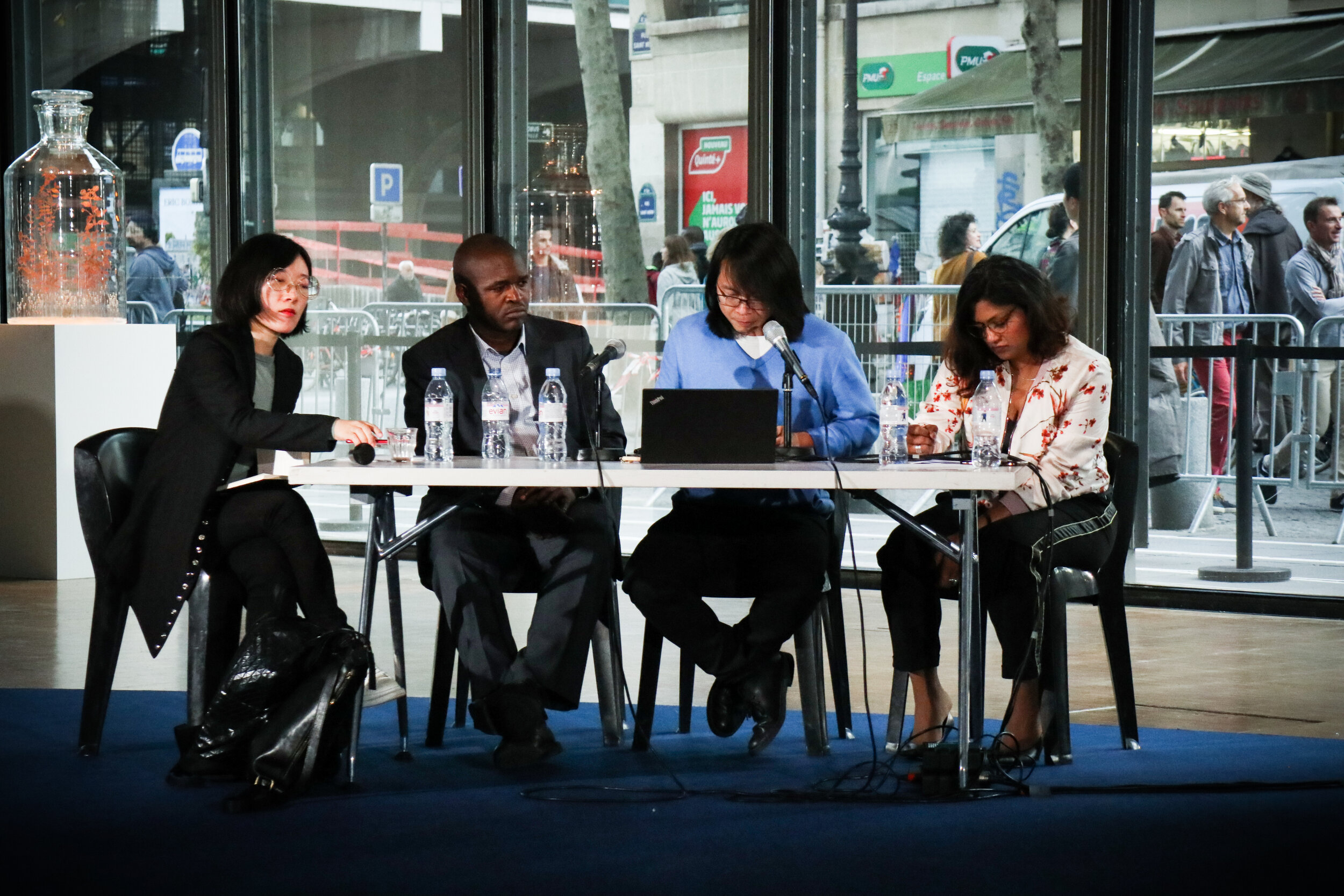Making Worlds
Clapperton Chakanetsa Mavhunga — Associate Professor of Science, Technology, and Society at MIT interviewed by Digital Earth’s Leonardo Dellanoce, during Digital Earth Talks — an event organized together with Jameel Arts Centre.
Leonardo Dellanoce: Digital Earth is all geared towards understanding technologies in different parts of the world. Although we are not interested as much in doing an anthropology of technology, so how people use the same technology differently around the world, but rather, how the world view of different cultures shape technics and technology, especially both looking at the future of these different localities, but also at the past, whether near or deep past. Africa is one of the most thrilling continents where people (especially artists) are engaging in this conversation, so I’d like to ask you a bit about the knowledge systems and the way of knowledge transfer, which is scientific and technological, specifically in Zimbabwe.
Clapperton Mavhunga: I think the important point is that things don’t look the same from everywhere to everyone. And I think that’s where we should begin with the question “what is technology?”
A lot of what you’re seeing in Africa with respect to creativity is that people are imagining technology or the technological not because technology comes in that way. Nothing comes from outside as technology a priori. It only becomes technology in view of people placing their hand and mind on it and assigning it purpose. It’s that fitness-for-purpose that really defines some of the most interesting things that are happening today in Africa in an everyday setting, which is an important aspect — what I call everyday innovation. The big companies or tech hubs, then scrub, you know, from society, and turn that everyday knowledge into their own products with all the intellectual property patents implications it entails. They give nothing back to the goose that laid the golden egg for them, which they then hatch into a chick.
I want an innovation system that really acknowledges the space of the everyday as a site of innovation, and secondly, that we think about the benefit not just to us when we tap into everyday innovation, but how to lift up the living standards of the people who produce that everyday knowledge, an incentive system for them to continue doing so. For now it’s exploitative at the least, theft of public knowledge without acknowledgment at most. And the result is M-Pesa.
Clapperton Chakanetsa Mavhunga during Digital Earth Talks, organized to gether with Jameel Arts Centre in Dubai © Brent Galotera
LD: How do you see these foundational myths, like cosmology, coming in the everyday practice today in Zimbabwe — both in virtuous and less virtuous ways, influencing the future or not.
CM: What explains it in Africa is the people’s behavior towards the cell phone, that both becomes the African mobile as well as mobile technology in view of Africans rendering it so. That is to say, it was Africans like Miko Rwayitare who introduced the cellular phone and its transmission systems (at least the terrestrial infrastructure) to Africa, not outsiders. What made the cellular phone both mobile and African was the African in everyday life (the cellular network being inserted into the circuits of the kinship network), in informal economies brought on by high unemployment, the hustling mode of working through movement, working on the move, and how Africans have created the Transient Workspaces I describe in my first book, and assembled a plethora of tools fit for such purpose.
If not the hustle mode, then the deep spirituality of Africans. People going to church every Sunday, who have a large network (call it fellowship) into which the phone is inserted to perform the role of communication on the one hand, between all these faiths, but additionally to perform other forms of kinship. So what we see is the cellular network, which Africans strategically deploy and insert into and to operationalize kinship networks and unless one understands how Africans think, live their lives and see the world, make worlds and define them, it’s very hard to really understand what is going on. And to me, Africans should actually use these creative energies driven by their own imperatives and cosmologies to make sense of what to design for themselves next, not just what’s coming from outside that they can adapt, modify, or repair, but what they can themselves design from scratch. We are beginning to see Africa as space of digital tech design, that is, ‘Made in Africa. The Mara phone in Rwanda is a good example. The question — with Zipline and drone deliveries of blood in Rwanda, Tanzania, and now Ghana — is that yes innovation is happening in Africa, but is it by Africans? Yes, technologies are being made in Africa, but are not by Africans. Africa shouldn’t just be a space for experiments and clinical trials by outsiders doing things their home-countries can’t allow them to do because they are too risky, even dangerous, or illegal, or because Africa is an uncomplicated sweatshop.
LD: Earlier this month you were talking in Paris at the Digital Earth event at the Centre Pompidou, in what we can call an art world setting. During that talk you were explaining an interesting role, a new role for the artists and also challenging a widespread conception of what being an artist is, complicating the picture and opening up alternatives that come from this experience.
CM: I see many hundreds of artists in Africa who are not just artists in the very dry sense of somebody who makes aesthetic objects — in the western sense if you will. Rather, artists in Africa work in what the French would call the atelier, or the workshop. And art or the arts is the oldest word for what would later be called “technology” in the western sense from 1861 with the foundation of MIT. At first what we now call technology was called ‘the mechanic arts’ and a career as an engineer (the mechanic artist) was less prestigious than the fine arts. There was no such division in Africa: the sculptor makes both masks and hoe handles, and a mask is not just an aesthetic object but regalia of priests and even gods. The smith makes both ornamental things, hoes, and spears.
The western-centric division between the mechanic arts and the fine arts that gave birth to the museum freezes the mask into an object of aesthetics to a paying public — which is fine if acquired through just means or made for such, not when African objects acquired through colonial theft and arbitrary seizure are imprisoned in the museums of Berlin, Paris, New York. London. Your art is my ancestor. That is why for us it is still troubling that the heads of our ancestors beheaded and their skulls abducted to Europe as proof of colonial conquest or boiled up, skin scalded off, crated, and taken to European scientific labs for use as cranial specimens of the ‘savage’ (to produce science) are ancestors in captivity that ought to be repatriated. And that ancestor kept in boxes in basements — hidden away now that the cultures that committed these macabre acts find it embarrassing and bloodthirsty to exhibit them — is the inspiration behind the ambient, genuine creativity that is often called African art, which to us is simply African artistry.
And because our inspiration comes from further upstream, not just from the limited mortal realm but the roots, the ancestor, how we arrive at design, at building, ceases to be linear in the western sense. As makers, we do not always first come up with a kind of concept or prototype and then starts creating an image or thing. Rather, you sculpt in the process, you design in the process of sculpting. If something goes not to your liking you tweak it. This is why African art cannot just be, you know, put in a box. The African artist is not simply aesthetics-maker but engineer, that is, if he/she is genuine. The African artist is indivisible from the people whose everyday he belongs to and speaks from. The energy. That is, if he/she is genuine.
Therefore, I want to challenge the genuine African artists to go beyond just being commentators on what is happening. Some seem resistant to be called African artists — just artists. I exclude those from the ‘genuine’ category because those I have seen do so want to ‘play’ on the global stage, get the big money, tend to be lone wolves, smile at you if they think you have come to their studio to buy, and never reply your WhatsApp the moment you propose cross-expertise collaborations that can flip Africa as negative stereotype into Africa as prosperous, empowered continent. To them, the market is the driving force, retreating to the slums or ghetto or city outskirts to build studios there a branding strategy, but the individualism is the trademark of the western fine artist. For those ones, yes, African artist is limiting, because they want to be Pablo Picasso, but do not know the backstory of the African artists that inspire what made Picasso famous. They are okay with being shadows.
So to those genuine African artists. They need to now start to think about making worlds. If I have invested them in my definition of genuine African artists with the power that they had before the division of mechanical arts in engineering and fine arts into art; if we say that that division does not exist, then it follows that, the most sophisticated thinker and engineer in Africa is its artist. The question is: are these artists embracing this role as critical thinker-doers? If so, then how about teaming up with those academics for whom being an academic is not enough, the public-facing professoriate, who could actually lend a philosophical perspective, an analytical perspective that resides in the realm of solving problems? History in service of problem-solving, theory in service of problem-solving, engineering in service of problem-solving, science in service of problem-solving.
In a way, as part of the university professoriate I am absolving the artists as we are failing them, by not making a connection that enables them to be deeply grounded in history. This is about the possibility for a philosophy that not only comments on the present but guides the future. So to cut the long story short, I need the artists in Africa to think of themselves not as engineer, artist, historian and so forth, but to form a creative, a communal (not community but communal as distinct from collective) that enables us to be multi-skilled problem solvers and to dream. The communal is the embodiment of huntu/ubuntu (everything starts with “we,” hence “I can only be because we are therefore”) whereas the collective begins with individuals who collectivize because of insecurity. The genuine African artist must embrace their role within a new knowledge communal that privileges African ways of seeing and acknowledges them as legitimate, from their own cosmology, at their own terms.
Clapperton Chakanetsa Mavhunga during a panel discussion at Digital Earth x Cosmopolis #2 weekend, Centre Pompidou, Paris © Laura Urbonaviciute
LD: You are referring to knowledge that you get through the hands, right? In my own background as Italian, a word comes to mind — artificio, or in Latin artificium. I find this word fascinating because it has two main elements: arti-ficium, in which ficium comes from ficere, a variant of facere, which means to make or to do. The word indicates something done with art, in which art is more the technique than the finished object, the process of making it with your hands — the Greek techné. Interestingly, this is the origin of the word ‘artificial’ in English, which we refer so much to today in relation to technology.
CM: You realize what you’re doing here — we are co-creating a vocabulary for a democratic engagement on matters of knowledge. You’re not coming here to say what it means in a universal fashion. You’re saying I’m an Italian and the word that we use now means this. This invites me to come from my own cosmology, to say that the person who is now called artist wasn’t just an artist originally. He was a maker, the art being all the weapons that he assembles, or all the repertoires he assembles in order to do a specific job, to create something.
We need a dialogue that doesn’t claim universalism for specific words. Even among people that claim to be doing very particular work, they tend to lean towards this — to say ‘this is what this word means,’ ‘this is how things are.’ According to whom? Who exactly is the we? I think that’s the mistake of false universalism. The we must be the space of freedom to express without one cosmology being the referee who decides if something is in or out.
LD: About art as term to indicate a process versus a specific aesthetic object.
CM: That is what prompted me to pursue a language that would not be seen as colonial, post-colonial, decolonial, non-colonial. A language free of the -colon referent, as I argue in my latest book, The Mobile Workshop; one that is neutral, enables me to describe things without feeling a sense that my concepts must engage some western author, popularized by the west through the monopoly of military force, media, and cultural imperialism, who has said all that must be said, and all there is for us to do is elaborate. Precisely because a lot of what I see in African languages, especially in my own chidzimbabwe, is the noun being a descriptor of actions that have been going on, mobilities being verbalized, orature in service of revealing the doing, never the other way round. And for Zimbabweans this is critical because we connote something as a thing based on its actions. So we may have to go back to the verb not because it’s a figure of speech, which is what linguistics was about to the colonizer, who miserably and completely distorted the archival knowledge value of language. Unless and until we return to the question of languages as archive and as philosophy, we risk assuming that language is simply a tool or medium of communication, not knowledge.
This then becomes the question: What do you do with language as archive in the age of data? Data that is commercialized. When you give up a lot of this data in order to make algorithms less discriminatory, loading it with African languages, what is being lost?
